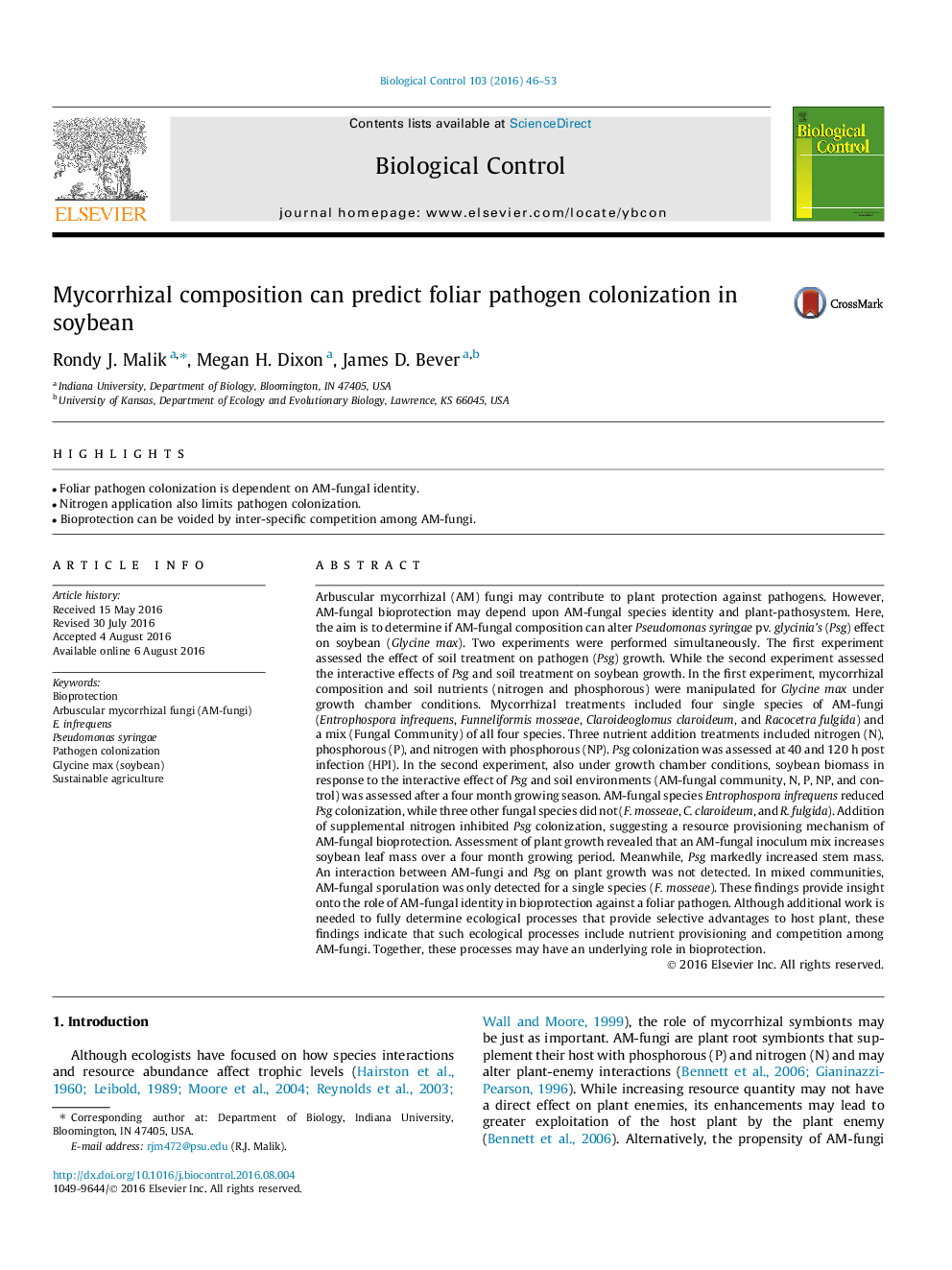| کد مقاله | کد نشریه | سال انتشار | مقاله انگلیسی | نسخه تمام متن |
|---|---|---|---|---|
| 4503533 | 1624231 | 2016 | 8 صفحه PDF | دانلود رایگان |
• Foliar pathogen colonization is dependent on AM-fungal identity.
• Nitrogen application also limits pathogen colonization.
• Bioprotection can be voided by inter-specific competition among AM-fungi.
Arbuscular mycorrhizal (AM) fungi may contribute to plant protection against pathogens. However, AM-fungal bioprotection may depend upon AM-fungal species identity and plant-pathosystem. Here, the aim is to determine if AM-fungal composition can alter Pseudomonas syringae pv. glycinia’s (Psg) effect on soybean (Glycine max). Two experiments were performed simultaneously. The first experiment assessed the effect of soil treatment on pathogen (Psg) growth. While the second experiment assessed the interactive effects of Psg and soil treatment on soybean growth. In the first experiment, mycorrhizal composition and soil nutrients (nitrogen and phosphorous) were manipulated for Glycine max under growth chamber conditions. Mycorrhizal treatments included four single species of AM-fungi (Entrophospora infrequens, Funneliformis mosseae, Claroideoglomus claroideum, and Racocetra fulgida) and a mix (Fungal Community) of all four species. Three nutrient addition treatments included nitrogen (N), phosphorous (P), and nitrogen with phosphorous (NP). Psg colonization was assessed at 40 and 120 h post infection (HPI). In the second experiment, also under growth chamber conditions, soybean biomass in response to the interactive effect of Psg and soil environments (AM-fungal community, N, P, NP, and control) was assessed after a four month growing season. AM-fungal species Entrophospora infrequens reduced Psg colonization, while three other fungal species did not (F. mosseae, C. claroideum, and R. fulgida). Addition of supplemental nitrogen inhibited Psg colonization, suggesting a resource provisioning mechanism of AM-fungal bioprotection. Assessment of plant growth revealed that an AM-fungal inoculum mix increases soybean leaf mass over a four month growing period. Meanwhile, Psg markedly increased stem mass. An interaction between AM-fungi and Psg on plant growth was not detected. In mixed communities, AM-fungal sporulation was only detected for a single species (F. mosseae). These findings provide insight onto the role of AM-fungal identity in bioprotection against a foliar pathogen. Although additional work is needed to fully determine ecological processes that provide selective advantages to host plant, these findings indicate that such ecological processes include nutrient provisioning and competition among AM-fungi. Together, these processes may have an underlying role in bioprotection.
Journal: Biological Control - Volume 103, December 2016, Pages 46–53
